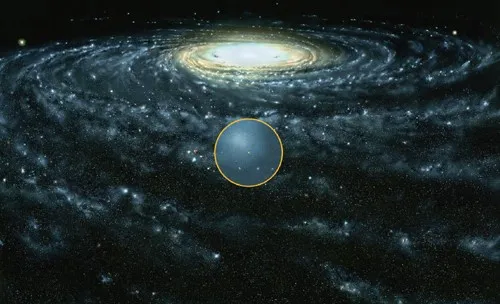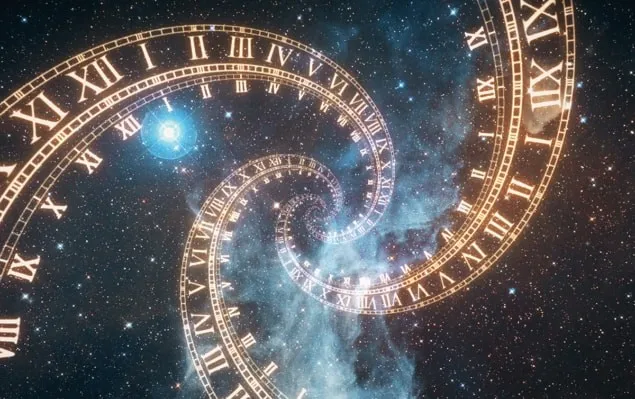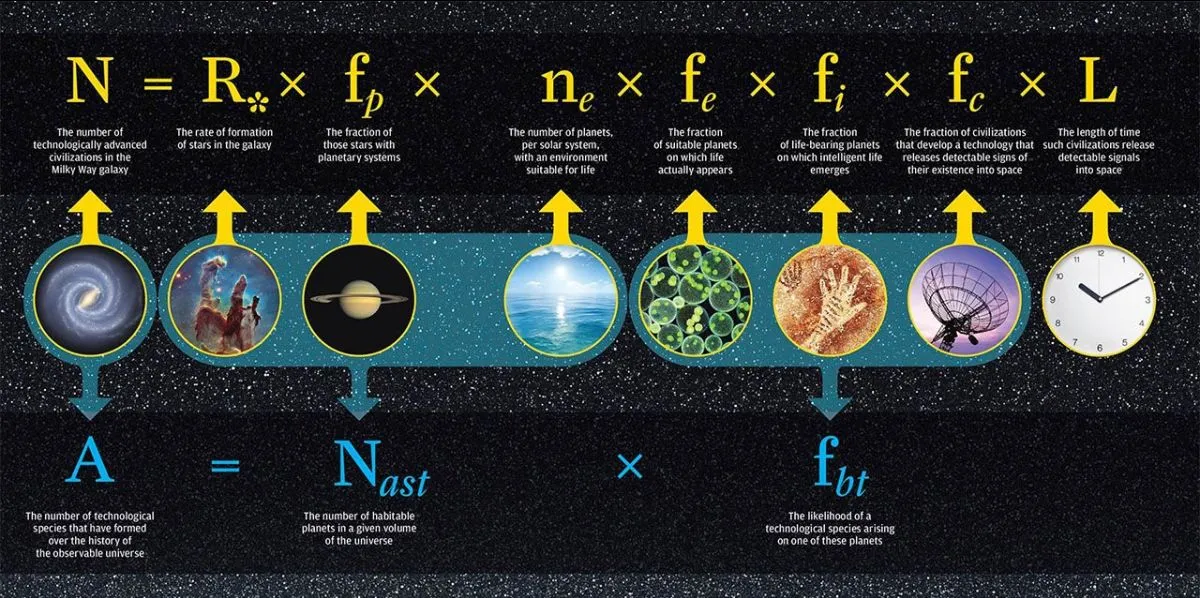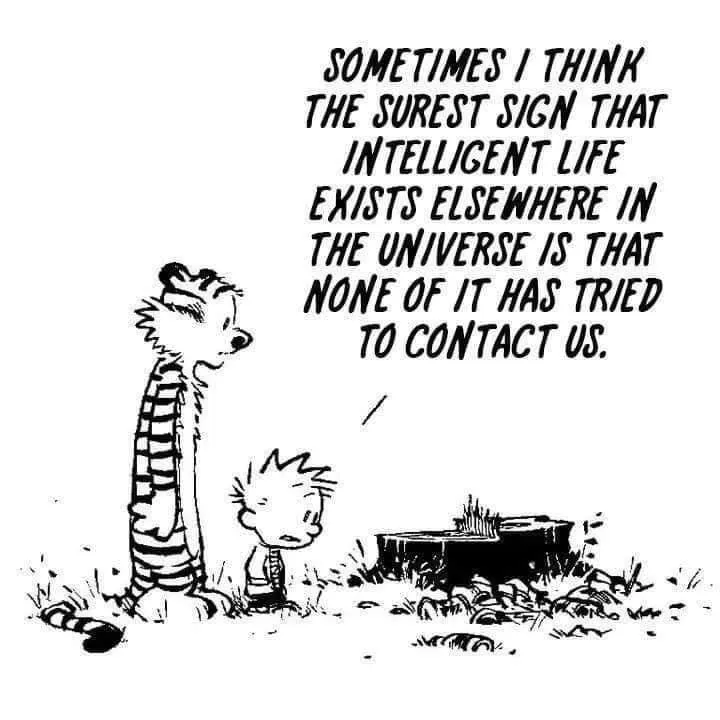Revisiting Drake
Katrina Borthwick - 6th January 2025
What are the chances that we will make contact with an alien civilisation?
This is a question that scientists have been very interested in, especially now we are beginning to discover evidence of, and even images of, more and more planetary systems. Which of these systems may have life on them and sufficient technology that we might be able to communicate with them within our lifetime? Is it possible that there may be civilisations out there so evolved that they aren’t interested in us? Would they be similar to us, or incomprehensibly different? Would they have solved some of our problems around energy and pollution?
The scientific mainstay of the ‘life in the galaxy’ question is the Drake equation, which has been with us since 1961.
There are seven factors in the Drake equation, the output of which gives us the number of civilisations in the Milky Way galaxy with which communication might be possible in our light cone. Well, there are actually nine factors, as we are only counting ‘civilisations’ and those in our ‘light cone’. Those last two things warrant a bit of explanation.

Civilisations and light cones
A civilisation is any complex society characterised by the development of the state, social stratification, urbanisation, and symbolic systems of communication beyond signed or spoken languages (writing systems and graphic arts). Humans are the only civilised lifeform on earth, and when we use the Drake equation we are looking for something that has at least advanced to that level.
The concept of the light cone is a bit more complex, and it describes the zones in space where communication is possible. This is limited by the speed at which light travels. For example, our closest star (other than the sun) is Proxima Centauri, part of the Alpha Centauri triple star system. That star is 4.2 light years away. What that means is that when we look through a telescope at Proxima Centauri, we are seeing it as it was 4.2 years ago. When we gaze at it, we are looking 4.2 years back in time. Even if we could send messages at the speed of light, the time between each message and response would be 8.4 years.
There probably isn’t life in the Alpha Centauri system, as a triple star system is not a stable environment for life, and the radiation from those powerful stars is harsh. The science fiction novel The Three Body Problem does a good job of explaining how awful it would be.

The brightest star in our sky, the Dog Star or Sirius, is 8.6 light years away. That star is too powerful and too young to harbour life. It’s only 230 million years old, and our earth is 4.6 billion years old. But even if Sirius did harbour a civilisation, we would be looking at 17.2 years for a message and response round trip.
A 2021 estimate was that the closest star system with any possibility of a habitable planet may be 12 light years away. But our galaxy is 105,700 light years across, and we are about 27,000 light years from the centre. So there are potentially civilisations where a message and reply could take 160,000 years. That delay in light arriving means that some civilisations may be effectively undetectable to us.
For example, if an alien intelligence reached civilisation level in the last 1,000 years, but their star is 2,000 light years away, then we can’t see them. The reverse also applies. Earth has only had civilisation for 6,000 to 5,000 years, and only had radio technology and industry for a fraction of that. So any star systems further out than a few thousand light years are going to see a pre-civilised earth. Our neighbours across the other side of our galaxy would be looking at upper paleolithic proto-humans, and our activity back then isn’t going to be detectable and wouldn’t count as a civilisation.
The seven factors
The seven factors used in the Drake equation, to determine the number of civilisations in our galaxy with which communication is possible, are:
- the average rate of star formation in our Galaxy.
- the fraction of those stars that have planets.
- the average number of planets that can potentially support life per star that has planets.
- the fraction of planets that could support life that actually develop life at some point.
- the fraction of planets with life that go on to develop intelligent life (civilisations).
- the fraction of civilisations that develop a technology that releases detectable signs of their existence into space.
- the length of time for which such civilisations release detectable signals into space.
Detectable signs of existence are called technosignatures, and may vary depending on the advancement of a civilisation. These could be radio waves, artificial heat or light, or even the manipulation of stellar energy – such as a dyson sphere encircling a home star.
Each of the factors in the Drake equation has huge uncertainties involved. We don’t really know the answers - they are just science-based estimates. The outputs of the Drake equation predict there should be many planets in our galaxy hosting civilisations that are active and communicating. One estimate runs at 12,500. But we have seen none. That problem has been named the Fermi paradox. Where is everyone in the galaxy?

Adding planetary tectonics
Recent research published in April 2024 has introduced a further element - planetary tectonics. This refers to the properties of the plates that make up the surface of the earth that interact in ways that push up continents, mountain ranges and islands. They cause earthquakes and volcanoes. There have been times in the earth’s history that the activity of the plates have nearly eradicated all life on the surface of the earth.
The new research posits that continents and oceans are required for advanced civilisations such as ours to arise. Early evolution must happen in water, as this is where the acceleration of biological evolution was made possible. And technological civilisation must happen on land.
Biological acceleration on earth relied on increased nutrient supply, increased oxygenation of the atmosphere and ocean, climate amelioration (change from glacial to interglacial stages), increased rate of habitat formation and destruction, and the moderate but sustained evolutionary pressure from constant environmental change. Seawater provided all of this. It contains dissolved nutrients, protects from UV radiation, and gives structural support to allow the development of single-cell eukaryotes from which all complex multicellular life has evolved.
Land provides varied and changing landscapes that create evolutionary pressures, including the development of water retention, structural support, gas exchange structures (e.g. lungs), internal fertilisation, adapted eyes, new senses and appendages adapted for moving, feeding and manipulation. Think of a whale. While it may be quite intelligent, what technology is capable of making?
Once we have such beings able to move around and exchange knowledge and use tools, the traits that promote survival are selected for. Intelligence and technology advances.
Therefore, this research proposes to factor in the continents and oceans requirement, by adding two new factors.
- the fraction of habitable exoplanets with significant continents and oceans.
- the fraction of habitable exoplanets with significant continents and oceans that have had plate tectonics operating for at least 500 million years.
The results of just these two factors above multiplied together gives a very small number (< 0.00003–0.002). If we multiply that with the other seven factors in the Drake equation, the output is miniscule. At best 24 civilisations in our galaxy or, at worst, less than one (counting us!).
This would resolve the Fermi paradox. We are not seeing these other civilisations because they likely don’t exist. Or at least not in a time and space where we can detect them.
